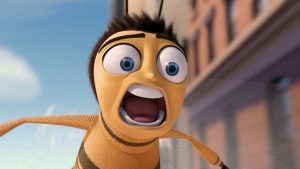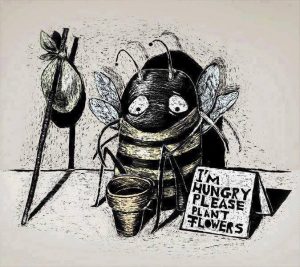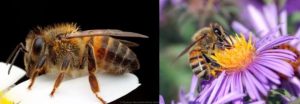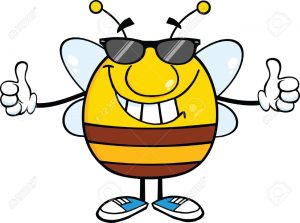
Enjoying that tangerine? That glass of cranberry juice this morning? Waking up in those 100% cotton bed sheets? Well, you can thank the bees. They are the major pollinators of plants and crops in ecosystems and are invaluable to us (Brown and Paxton, 2009; Costanza et al., 1997). Unfortunately, bees are declining, mainly through human causes (boo!). Habitat loss, fragmentation, invasive species and climate change are all factors that are harming the bee populations.
Homes under the hammer – no, not the TV show
The human population is set to reach ~9 billion by 2050 (United Nations, 2004), seeing an increase in resources to feed all these mouths. Habitats need to be converted into farmland to provide crops (which ironically will be pollinated by bees!). It is known that human disturbance can negatively impact bee numbers (Winfree et al., 2009). It could also cause populations to inbreed, meaning they are susceptible to nasty diseases causing death (Brown and Paxton, 2009). The more we harm bee habitats, we are causing detriment to their numbers and are also causing a negative effect on our lives – how counterproductive.

How did you get here?!
Sometimes you get an unfamiliar, ugly head pop up in a population which is causing harm to the original species that live there – otherwise known as an invasive species. The process is usually:
- Introduction
- Colonisation
- Naturalisation
- Spread
- Impact
This can be seen in the Africanized honeybee in South America, largely replacing the European honeybee by outcompeting it (Schweiger et al., 2009).

Nature has no air-conditioning: Get used to the warm!
Despite belief from certain world leaders, climate change is happening. Climate change brings many problems to bee populations, such as a change in the relationship between plants and the bees and an increase in disease and parasites (Le Conte and Navajas, 2008).
In snowy environments, climate change is causing snow to melt earlier, meaning flowers are emerging earlier, causing bees to be out of sync (phenology), thus causing changes in what’s called their ‘functional traits’ which are traits that typically relate to changes in the environment.
Bees must build up sufficient honey stores so that they can survive over the winter periods, however climate change is causing a change in flower development (and pollen production) whereby drought is responsible for the decline in flower numbers (La Conte and Navajas, 2008). This means that the bees cannot build the right amount of honey stores and starve over the winter period.
The future of the bees
There are conservation efforts to try and help bees (woo!) such as (Brown and Paxton, 2009):
- Minimising habitat loss
- Making agricultural habitats bee-friendly
- Training scientists and the public
If bees were to go extinct tomorrow, we would have to self-pollinate EVERYTHING, as bees do all this hard work for us, for nothing. If we lose bees, we lose the planet, we must ensure bees do not leave us otherwise the future will look very bleak (with no hint of yellow and black).

[498 words]
References
Brown, M. and Paxton, R. (2009). The conservation of bees: a global perspective. Apidologie, 40(3), pp.410-416.
Costanza, R., d’Arge, R., de Groot, R., Farber, S., Grasso, M., Hannon, B., Limburg, K., Naeem, S., O’Neill, R., Paruelo, J., Raskin, R., Sutton, P. and van den Belt, M. (1997). The value of the world’s ecosystem services and natural capital. Nature, 387, pp.253-260.
Le Conte, Y. and Navajas, M. (2008). Climate change: impact on honey bee populations and diseases. Rev. sci. tech. Of. int. Epiz, 27(2), pp.499-510.
Schweiger, O., Biesmeijer, J., Bommarco, R., Hickler, T., Hulme, P., Klotz, S., Kühn, I., Moora, M., Nielsen, A., Ohlemüller, R., Petanidou, T., Potts, S., Pyšek, P., Stout, J., Sykes, M., Tscheulin, T., Vilà, M., Walther, G., Westphal, C., Winter, M., Zobel, M. and Settele, J. (2010). Multiple stressors on biotic interactions: how climate change and alien species interact to affect pollination. Biological Reviews, 85, pp.777-795.
United Nations (2004) World Population to 2300, New York. [online] http://www.un.org/esa/population/ publications/longrange2/WorldPop2300final.pdf
Winfree, R., Aguilar, R., Vázquez, D., LeBuhn, G. and Aizen, M. (2009). A meta-analysis of bees’ responses to anthropogenic disturbance. Ecology, 90(8), pp.2068-2076.
Recent Comments